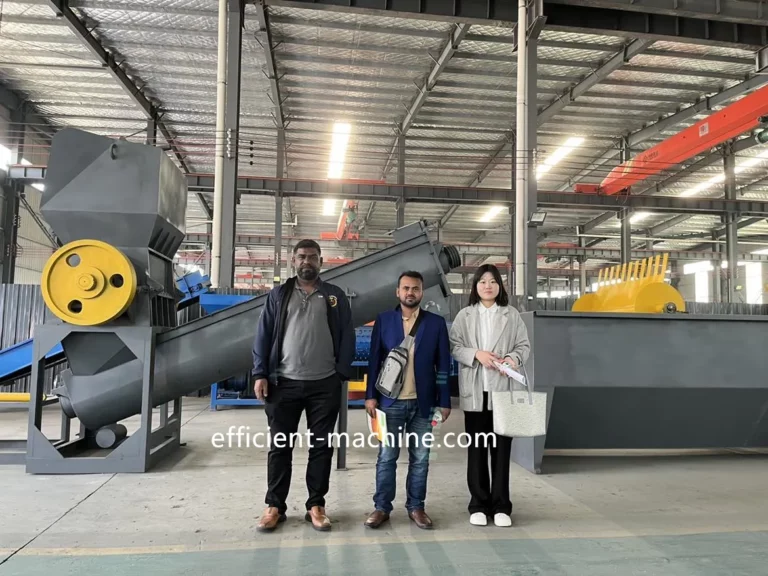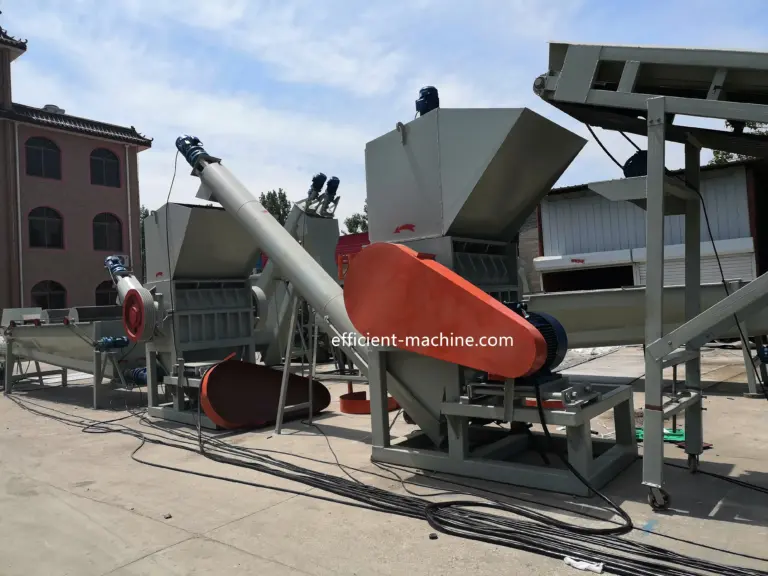Guides To Buy Industrial Plastic Granulator
Hundreds of industries today use plastic granulators to break down bulk materials into smaller plastic .
Plastic granulators are a vital component of the recycling industry. By converting bulky plastic waste into smaller, more manageable pellets, recycling becomes a simple process of sorting, melting, and reshaping plastic. However, not all plastic granulators are created equal. The best plastic granulators for your recycling line depends on a variety of factors, including:
The type of plastics processed by the facility
The organization of the palstic recycling line
The volume of plastic that needs to be processed per unit time
Every plastic recycling plant processes plastics differently, with varying outputs of plastics, from soft to hard, large to small, and so on. These specific factors determine which plastic granulators is best suited for your recycling process.

Plastic Granulator Components
- Hopper
The entry point where waste plastic is fed into thep plastic granulator.
May include a loading conveyor for automated feeding.
- Rotor (Cutting Rotor)
The rotating assembly with blades that shred or cut the plastic.
Can be open rotor (for softer materials) or closed rotor (for harder plastics).
May have staggered blades for efficient cutting.
- Blades (Cutting Knives)
Fixed blades (bed knives): Stationary blades mounted on the plastic granulator housing.
Rotating blades: Mounted on the rotor, they work with fixed blades to shear plastic.
Made from hardened steel (e.g., D2, HSS) for durability.
- Screen (Sieve or Mesh)
Determines the final granule size.
Different mesh sizes (e.g., 6mm, 10mm) control output particle size.
Can be interchangeable for different applications.
- Motor & Drive System
Provides power to the rotor (typically electric motor or hydraulic drive).
May include a belt drive, gearbox, or direct drive system.
- Housing (Casing)
Encloses the cutting mechanism for safety and noise reduction.
Often made from heavy-duty steel with soundproofing materials.
- Discharge System (Outlet)
Channels the shredded plastic out of the machine.
May include a blower, suction system, or conveyor for material transport.
- Control Component
Houses electrical controls (start/stop, speed adjustment, safety interlocks).
May feature PLC automation for industrial granulators.
- Cooling System (Optional)
Some granulators have water cooling or air fans to prevent overheating.
Would you like details on a specific type of granulator (e.g., central, inline, slow-speed)?
The main types of common plastic granulators
Central Plastic Granulators (Heavy-Duty Plastic Granulators)
- Designed for high-capacity processing of large plastic parts, pipes, sheets, and purgings.
- Feature robust construction with high-torque motors.
- Often used in post-industrial recycling (PIR) and large-scale operations.
Slow-Speed Plastic Granulators
- Operate at lower RPMs (revolutions per minute) for quieter, energy-efficient processing.
- Ideal for tough materials like thick-walled parts, films, and fibers.
- Reduce heat generation, preventing material degradation.
High-Speed Plastic Granulators
- Run at higher RPMs for faster granulation of thinner plastics.
- Suitable for softer materials like plastic films.
- Commonly used in post-consumer recycling (PCR).
Side Plastic Granulators (Inline Plastic Granulators)
- Mounted beside injection molding or extrusion machines for immediate recycling of sprues, runners, and rejected parts.
- Enable closed-loop recycling in manufacturing.
Conical Plastic Granulators
- Use a conical rotor and screen design for efficient cutting with less noise and dust.
- Suitable for medium-duty applications like blow-molded parts and thick films.
Plastic Shredder-Granulator Combination (Two-Stage Granulators)
- First shred bulky plastic waste, then granulate it into uniform plastic granules.
- Used for mixed or contaminated plastics in recycling plants.
Wet Plastic Granulators (Underwater Platic Granulators)
- Cut molten plastic strands underwater to produce smooth, uniform plastic granule.
- Commonly used in plastic extrusion lines (e.g., for LDPE, HDPE, PP).
Key Factors in Choosing a Plastic Granulator:
-Material Type (rigid, flexible, thick, or thin plastics).
-Throughput Capacity (small-scale vs. industrial).
-Rotor Design (open, closed, or staggered blades).
-Screen Size (determines final granule size).
-Noise & Dust Control (important for workplace safety).
Would you like recommendations for a specific application?
Applications of Plastic Granulators
Recycling: Plastic granulators are crucial in the plastic recycling industry. They crush various forms of waste plastic into uniform pellets for processing into new products. This includes post-consumer plastics such as PET bottles, plastic containers, and plastic packaging.
Manufacturing: In the plastics manufacturing industry, plastic granulators are used to reuse waste plastics generated by production processes like injection molding, blow molding, and extrusion. This helps reduce waste and lower material costs.
Automotive: While we often think of cars as primarily made of metal, they also contain many large plastic components. The automotive industry uses plastic granulators to recycle plastic parts such as bumpers, dashboards, and interior panels. Manufacturers can reuse the granulated plastic to produce new car parts.
Medical: Plastics are widely used in the medical field because they are inexpensive, versatile, and can keep equipment sterile. Syringes, IV bags, and catheters are just some of the plastics discarded daily in nearly every hospital.
Construction: Construction projects don’t necessarily need plastic granulators to reduce plastic waste; rather, they need to produce plastic granules for various building projects. For example, granulated plastics can be used to make plastic lumber and laminate flooring. This use reduces plastic waste and provides a durable, weather-resistant material.
How to buy a suitable plastic granulator?
Plastic granulators are indispensable in the modern world. From their location in the factory to the speed at which they operate, there is a plastic granulator for every situation. If your business is considering investing in a granulator, Efficient Machine can offer advice on what kind of granulator to purchase.
These granulator machines help minimize environmental impact and contribute to a circular economy by transforming plastic waste into reusable granules. Understanding the applications can help industries choose the right machine for their specific needs, optimizing efficiency and sustainability. In a circular way, granulators build up the world by breaking down waste.

